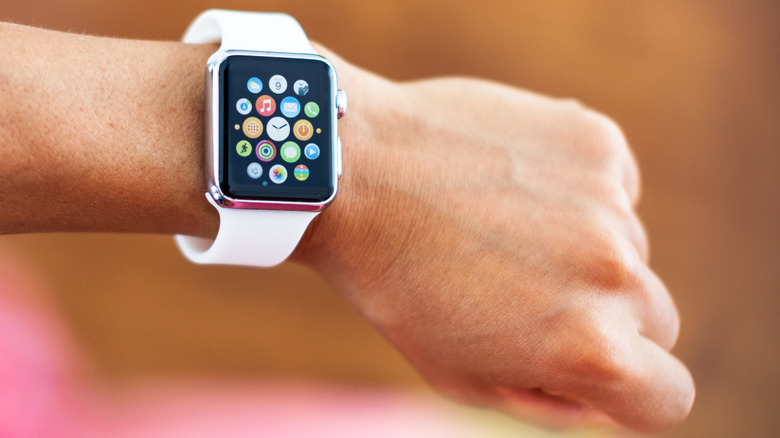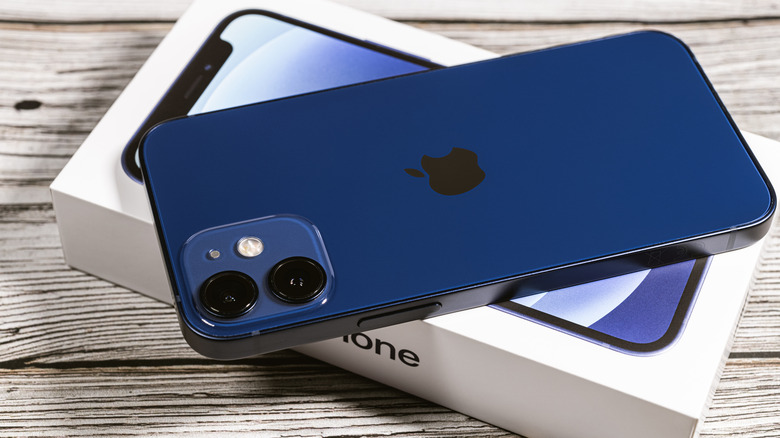Apple Watch Gets Double Tap Feature As iOS 17.1 Serves Up AirDrop And Apple Music Updates
Several Apple devices will have some new features thanks to software updates Apple just released for iOS, iPad OS, and watchOS. The Apple Watch Series 9 and Apple Watch Ultra will see the biggest change with watchOS 10.1, including a new double tap feature allowing users to control the device without touching it. Like the AssistiveTouch gesture that was already available as an Accessibility feature on most Apple Watches, Double Tap can control multiple quick actions when a user taps together the index finger and thumb of their watch hand.
Apple says that by controlling the main functions of their Apple Watch with one hand, Double Tap can be "helpful in common situations when the user's other hand is occupied, such as when walking the dog, cooking, or holding a cup of coffee." Actions that can be controlled with Double Tap include opening Smart Stack, scrolling through widgets, answering and ending phone calls, using timers and stopwatches, snoozing alarms, taking remote iPhone photos, switching to the new Elevation view in the Compass app, controlling music, podcasts, and audiobooks, and more.
Double Tap doesn't use up much battery and can be used whenever the display is awake. It showcases how far the technology in the Apple Watch has come. Using the new four-core Neural Engine built for the Apple Watch Series 9 and Apple Watch Ultra 2, machine learning is used to process data from the accelerometer, gyroscope, and optical heart sensor to detect the unique signature of wrist movements and blood flow changes that occur when a user makes the Double Tap gesture.
iOS 17.1 fixes bugs and introduces new features
While iOS 17.1 is a minor update compared to last month's launch of iOS 17, it brings plenty of small changes to iPhones. One tweak fixes an annoying AirDrop feature that would stop transfers if the devices fell out of Wi-Fi range; now, AirDrop transfers between two iPhones can continue over a cellular connection. The update also introduces a new Favorites feature to Apple Music, allowing users to favorite songs, artists, albums, and playlists. The app will incorporate these favorites into its recommendation algorithms and will now add song suggestions at the end of playlists. Dynamic cover art that reflects the music in a playlist has also been added to Apple Music.
Other new features include the ability to choose a specific album for the Lock Screen's Photo Shuffle feature, Home key support for Matter locks, and improved syncing across devices for Screen Time settings. The update also fixes glitches that cause the keyboard to be less responsive, create display image persistence, and cause the Significant Location privacy setting to reset when using an Apple Watch. Additionally, bugs that cause the names of incoming callers to occasionally not appear when on another call and cause some custom and purchased ringtones to not appear as text tone options have also been patched.
The update improves crash detection for iPhone 14 and iPhone 15 models. For people with an iPhone 14 Pro, iPhone 14 Pro Max, iPhone 15 Pro, and iPhone 15 Pro Max, the update will give them more control over the StandBy feature that can be used when the phone display is off. iOS 17.1 also expands the availability of the flashlight indicator on the Dynamic Island for all compatible iPhones.
Some updates are only available in Europe
Some of the updates that come with iOS 17.1 are region-specific and won't be found on American iPhones. Apple Wallet has been integrated with the U.K.'s Open Banking API, allowing users in that country to see their bank balance in the app if they have a supported account.
For iPhone 12 users in France worried about excessive radiation, iOS 17.1 disables a feature that boosts the cellular signal when the iPhone isn't being held by a person. The radiation an iPhone emits is electromagnetic radiation, which is natural in devices that employ Wi-Fi and cellular communication. In most countries, it's deemed to be safe, but France banned the iPhone 12 after a local watchdog found that the device generated more electromagnetic radiation than permitted by the French law. The new iOS update seeks to assuage fears in the country that the iPhone 12 is harmful to humans, though Apple didn't mention the change in its update notes.
You can update to iOS 17.1 or iPadOS 17.1 today on eligible devices by going to Settings > General > Software Update.


